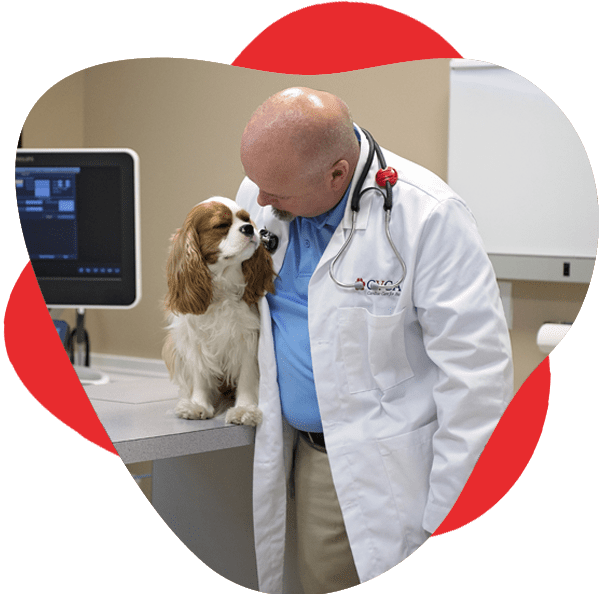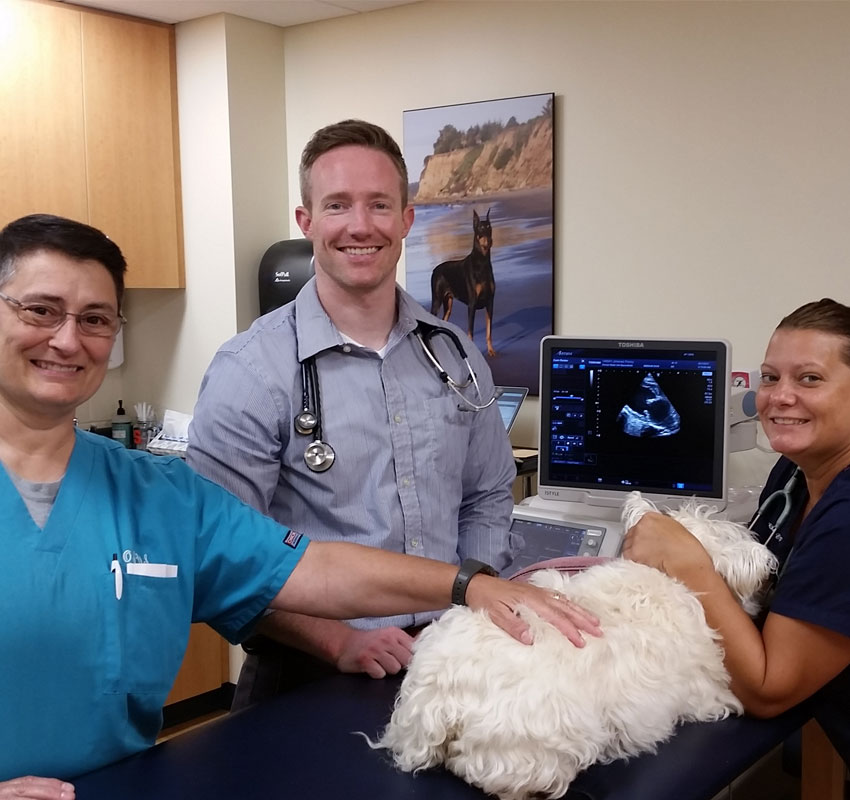What You Need to Find Out About Vet Providers: An Introduction of Diagnostic Tools and Procedures
Vet services play an important duty in preserving the wellness of family pets. Normal examinations can reveal concealed health issues at an early stage. Numerous diagnostic devices and treatments, such as blood examinations and imaging techniques, provide essential understandings right into an animal's health. Understanding these methods is vital for pet proprietors. What specific diagnostic treatments are most generally utilized, and just how can they impact a family pet's therapy plan?
Value of Normal Veterinary Examinations
While many pet dog owners may take too lightly the value of routine vet exams, these appointments are necessary for keeping a pet's overall health and wellness. Regular sees to the vet allow for early detection of potential health and wellness concerns prior to they rise right into significant problems. Routine examinations commonly include inoculations, which are important for preventing contagious conditions that might badly influence a pet dog's health. In addition, these consultations provide an opportunity for vets to analyze the pet's weight, dental health, and general problem, making sure that the family pet is growing. Throughout these gos to, animal owners can also obtain beneficial suggestions on diet regimen, workout, and preventative treatment tailored to their particular family pet's demands.
Typical Diagnostic Procedures in Vet Medicine
In vet medicine, accurate medical diagnosis is important for effective treatment. Usual diagnostic treatments consist of blood testing techniques, progressed imaging technologies, and urinalysis, each playing a considerable role in recognizing health and wellness problems. Comprehending these techniques improves the ability to give suitable take care of pet clients.
Blood Testing Methods
Blood testing techniques function as necessary diagnostic devices in veterinary medication, allowing veterinarians to evaluate the health of pets accurately. These strategies entail accumulating blood samples to assess different parts, such as red and white blood cells, platelets, and biochemical pens. Common examinations consist of complete blood matters (CBC), which evaluate general health and find infections, and biochemical panels, which assess body organ function and metabolic condition. Additionally, serological examinations can determine details illness via antibody detection. Blood screening is minimally intrusive and offers crucial info that aids in identifying problems, keeping an eye on health standing, and assessing actions to therapies. Overall, these techniques play a vital role in making sure ideal take care of animals and animals alike.
Imaging Technologies Made Use Of
Diagnostic imaging technologies are essential devices in vet medication, enhancing blood screening techniques by offering aesthetic understandings right into an animal's inner frameworks. Usual imaging modalities include X-rays, which work for evaluating bone fractures and discovering international items, and ultrasound, which permits for real-time visualization of soft cells and body organs. Magnetic vibration imaging (MRI) uses thorough photos of intricate physiological locations, specifically in neurological assessments. Computed tomography (CT) provides cross-sectional photos, boosting diagnostic accuracy for numerous problems. Each of these modern technologies aids veterinarians in identifying health problems, intending therapies, and checking healing. By integrating imaging modern technologies, veterinary professionals can better analyze a pet's wellness and make notified decisions concerning their treatment.
Urinalysis and Diagnostics
Urinalysis acts as a vital diagnostic device in vet medicine, providing beneficial understandings into a pet's total health and wellness and aiding in the discovery of different problems. This non-invasive treatment evaluates pee examples to evaluate kidney function, hydration standing, and metabolic disorders. Usual elements examined consist of certain gravity, pH levels, glucose, healthy proteins, and the visibility of blood or germs. Abnormal searchings for can indicate problems such as urinary system infections, diabetes mellitus, or kidney illness. To enhance analysis accuracy, urinalysis is often done combined with various other tests, such as blood job and imaging research studies. Early discovery through urinalysis can bring about timely treatments, enhancing the diagnosis for numerous vet clients. It is an essential element of thorough veterinary treatment.
Understanding Blood Tests and Research Laboratory Evaluation
Understanding blood examinations and research laboratory evaluation is important in veterinary medicine as it helps in detecting numerous health conditions in pets. Different types of blood tests give vital details about an animal's interior state, while translating laboratory results needs cautious factor to consider of countless factors. This section will check out the sorts of blood examinations available and the relevance of their outcomes.
Kinds Of Blood Examinations
Blood tests play an essential role in veterinary medicine, giving necessary understandings right into a pet's wellness standing. Various types of blood examinations are made use of, each offering various objectives. Full blood matters (CBC) analyze total wellness and detect problems such as anemia or infection. Biochemical accounts examine body organ feature by gauging electrolytes and enzymes, supplying insights into metabolic wellness. Serological examinations determine particular antibodies or microorganisms, aiding in the diagnosis of infections or autoimmune conditions. Blood inputting warranties risk-free transfusions, while coagulation tests gauge the blood's capacity to embolisms, crucial for operations. These examinations collectively enhance diagnosis, therapy planning, and monitoring of a pet's health and wellness, showing the significance of comprehensive laboratory analysis in veterinary care.

Analyzing Laboratory Outcomes
An extensive evaluation of laboratory outcomes is crucial for accurate diagnosis and treatment in vet medication. Analyzing laboratory results requires an understanding of normal recommendation ranges and the importance of discrepancies. Blood examinations can expose various wellness signs, such as body organ function, electrolyte balance, and the visibility of infections. Veterinarians must consider the entire professional picture, including the animal's background, checkup searchings for, and any type of signs and symptoms offered. Variations in results might emerge from aspects such as age, breed, and underlying health problems. Lab outcomes should not be seen in isolation however rather as component of an all-encompassing analysis method. Exact interpretation allows for tailored treatment plans and much better end results for vet clients.
Imaging Techniques: X-rays, Ultrasounds, and Beyond
Imaging strategies are vital tools in vet medication, offering essential understandings into the health and wellness of animals. Amongst the most commonly made use of techniques are X-rays and ultrasounds. X-rays are indispensable for imagining bone structures, assisting vets recognize fractures, lumps, or foreign objects. This method is non-invasive and quick, making it ideal for urgent situations.Ultrasounds, on the various other hand, make use of sound waves to develop pictures of soft cells and organs. This method is particularly beneficial for analyzing the heart, abdominal area, and reproductive body organs, permitting vets to evaluate conditions like liquid accumulation or organ abnormalities.Beyond X-rays and ultrasounds, progressed imaging techniques such as computed tomography (CT) and magnetic resonance imaging (MRI) are increasingly made use of in vet technique. These approaches supply thorough cross-sectional pictures, improving the precision of diagnoses and treatment plans. Ultrasound For Dogs. Generally, imaging techniques play a crucial role in ensuring effective veterinary care
The Function of Biopsies in Diagnosing Pet Dog Wellness Issues
Precision in detecting health concerns in pets frequently pivots on this article making use of biopsies, which offer clear-cut information regarding cells problems. A biopsy entails the elimination of a little sample of tissue for assessment under a microscopic lense, enabling vets to identify various conditions, including infections, tumors, and inflammatory illness. This diagnostic tool is crucial for differentiating in between deadly and benign developments, leading treatment decisions, and examining the intensity of a condition.Biopsies can be done making use of various techniques, such as needle aspiration, incisional biopsies, or excisional biopsies, depending on the area and type of tissue involved. The choice of approach might impact healing time and the quantity of cells gathered. Eventually, the info obtained from a biopsy can result in targeted therapies, improving end results for pet dogs encountering significant health and wellness difficulties. Veterinarians emphasize the importance of this treatment in accomplishing accurate medical diagnoses and reliable treatment plans.
Advanced Diagnostic Devices: Endoscopy and CT Checks

Advanced diagnostic devices, such as endoscopy and CT scans, play a vital duty in contemporary vet medication, offering non-invasive techniques to visualize interior frameworks and diagnose numerous conditions in family pets. Endoscopy entails using an adaptable tube geared up with a cam, allowing vets to take a look at the gastrointestinal system and breathing system directly. This method can reveal irregularities such as lumps, foreign bodies, or inflammation, allowing targeted therapy plans.CT scans, on the other hand, use innovative imaging technology to create in-depth cross-sectional photos of the body (Cancer Veterinary Near Me). This technique is specifically valuable for assessing complicated frameworks like the mind, back, and joints. By giving high-resolution images, CT scans help veterinarians in determining concerns that may not appear through typical radiography. Together, these advanced tools enhance diagnostic precision, boost therapy end results, and inevitably add to far better total pet dog health management

Translating Test Results: What Pet Dog Owners Ought To Know
Recognizing test outcomes can be a difficult job for animal proprietors, particularly after sophisticated treatments like endoscopy and CT scans have been executed. Translating these outcomes needs an understanding of medical terms and a clear understanding of what the findings indicate about the animal's wellness. Veterinarians typically offer descriptions, but the intricacy of the results can still result in confusion.Pet proprietors ought to proactively participate in discussions with their veterinarians, asking inquiries to clarify any type of unpredictabilities. It is vital to recognize abnormal versus normal results and the ramifications for the pet's this contact form treatment plan. Furthermore, identifying that some outcomes might require additional screening or surveillance can help proprietors stay notified regarding their family pet's wellness trip. Ultimately, a collective technique in between pet dog proprietors and veterinary professionals promotes much better health and wellness outcomes and boosts the total treatment experience for pet dogs.
Regularly Asked Inquiries
Just how Do I Choose the Right Vet Facility for My Pet dog?
Picking the ideal vet facility entails looking into regional alternatives, reviewing credentials, seeing centers, and examining staff interactions (Board Certified Veterinary Cardiologist). Prioritizing referrals from relied on sources can help guarantee the best treatment and setting for a pet dog's wellness demands
What Should I Do if My Pet Dog Refuses to Go to the Veterinarian?
When a family pet refuses to go to the veterinarian, it's suggested to stay calm, use deals with or playthings to lure them, and take into consideration setting up a home browse through if anxiousness continues. Patience and favorable support are essential.
Are There Telehealth Options for Vet Solutions?
Telehealth choices for vet solutions are progressively readily available, permitting pet proprietors to speak with vets remotely. These solutions make it possible for conversations concerning wellness problems, advice on small disorders, and follow-ups without requiring to check out a center.
Just how Often Should My Pet Have Dental Exams?
The regularity of oral examinations for pet dogs generally depends upon their age and type. Typically, vets advise yearly oral analyses, although some pet dogs might require more regular sees to keep optimal dental wellness.

What Are the Expenses Connected With Vet Diagnostics?
The prices connected with vet diagnostics can differ widely, normally varying from fundamental tests like blood work to sophisticated imaging methods. Variables influencing expenses include the facility's area, equipment used, and particular examinations needed for each animal. Veterinary services play a crucial duty in maintaining the health and wellness of family pets. While lots of pet dog proprietors might ignore the relevance of normal vet exams, these consultations are important for preserving an animal's general health and wellness. Furthermore, these visits give a possibility for vets to analyze the pet's weight, dental health and wellness, and general problem, making sure that the family pet is prospering. Precision in identifying wellness issues in animals usually pivots on the usage of biopsies, which offer definitive details concerning cells irregularities. Furthermore, acknowledging that some results may require more screening or surveillance can aid my website owners stay educated concerning their pet dog's wellness trip.